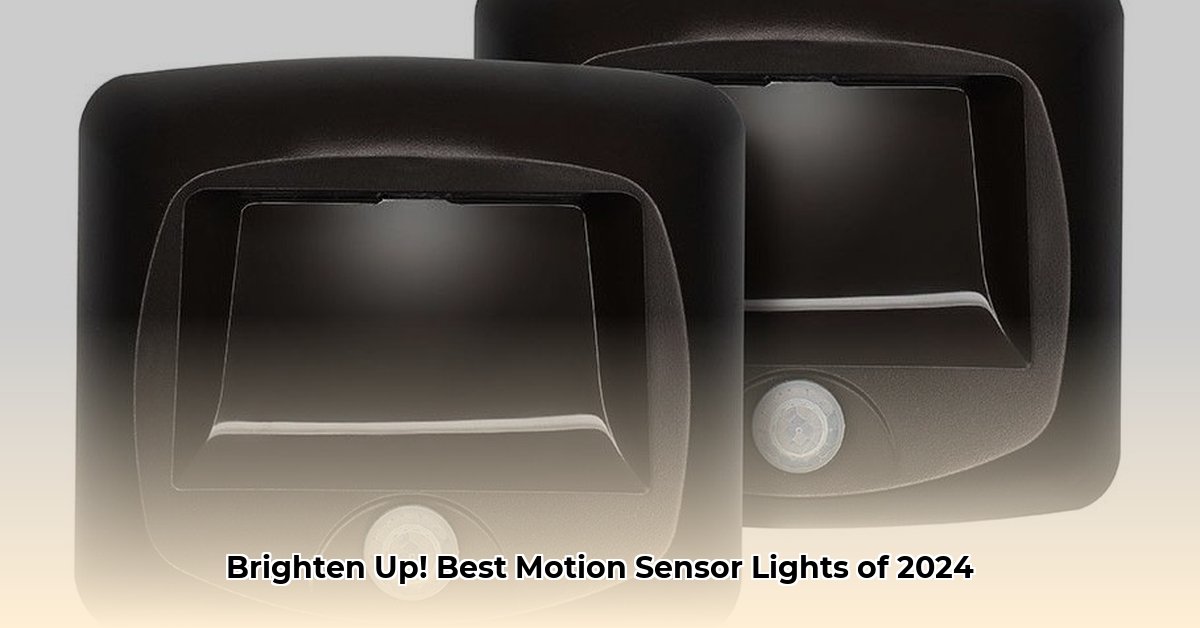Navigating the world of battery-powered motion sensor lights can be tricky. This comprehensive guide simplifies your search, covering everything from closet puck lights to powerful security floodlights. We’ll explore essential features, top-rated products, installation tips, and potential troubleshooting, helping you make the most informed decision for your needs in 2024.
Illuminating Your Options: Types and Features
Battery-operated motion sensor lights offer a convenient, wire-free solution for various lighting necesidades. Let’s explore the diverse options available:
Spotlights and Floodlights: Security and Illumination
For powerful illumination in backyards, driveways, or other large areas, spotlights and floodlights are ideal. These lights provide a bright, focused beam, often exceeding 1000 lumens, making them suitable for security and general outdoor lighting.
Step and Pathway Lights: Safety and Ambiance
Smaller, less intense step and pathway lights offer subtle illumination for stairs, walkways, and landscapes. They typically provide a softer glow, prioritizing safety and ambiance over powerful brightness.
Under-Cabinet Lights: Task Lighting and Convenience
Designed for kitchens, workshops, and other task-oriented spaces, under-cabinet lights offer focused illumination without the need for wiring. These lights can be highly energy-efficient, often employing LED technology for long battery life.
Indoor Motion Sensor Lights: Closets, Hallways, and More
From compact puck lights for closets to ceiling-mounted fixtures for hallways, various battery-powered options cater to indoor needs. These lights provide convenient illumination triggered by motion, eliminating the need for fumbling with switches in the dark.
Key Considerations: Brightness, Range, and Power
Choosing the right light involves understanding a few key features:
Brightness (Lumens): How Much Light Do You Need?
Lumens measure light output. Higher lumens mean a brighter light. A closet light might only need 100 lumens, while a security light could require over 1000. Consider the intended use and area size.
Sensor Range and Angle: Detecting Motion Effectively
The sensor’s range determines how far away it detects motion, while the angle defines its field of view. Wider angles and longer ranges are best for security, while narrower options suffice for smaller spaces.
Power Source: Battery vs. Solar
- Battery-Powered: Offers reliable performance regardless of weather but requires periodic battery replacements. Choose from standard alkaline batteries or rechargeable lithium-ion for longer lifespan and cost savings over time.
- Solar-Powered: Environmentally friendly and cost-effective in sunny locations, eliminating battery replacements. However, performance can fluctuate depending on sunlight availability. Some models combine solar charging with battery backup for added reliability.
Top Picks and Product Overview
While specific product recommendations can quickly become outdated, here’s a general overview of popular categories:
Wireless Battery-Powered Spotlights (e.g., Mr. Beams)
- Pros: Easy installation, placement flexibility, reliable performance.
- Cons: Requires battery replacements.
- Best For: Outdoor security, general-purpose illumination.
Solar-Powered Wireless Motion Sensor Lights (e.g., AIXPI, Baxia Technology, LITOM and Urpower)
- Pros: Eco-friendly, cost-effective (no battery replacements).
- Cons: Performance dependent on sunlight availability, potentially limited detection range.
- Best For: Sunny locations, pathways, gardens.
Wireless Ceiling Mount Motion Sensor Lights (e.g., TOOWELL)
- Pros: Easy to install, provide broader, and ambient light.
- Cons: Might not be suitable for outdoor areas.
- Best For: Hallways, closets, entryway, garage.
Remember to research specific models and check recent reviews before purchasing. Consider factors like battery life, weather resistance (IP rating), mounting options, and additional features like adjustable sensitivity and dimming.
Installation and Troubleshooting: A Quick Guide
Most battery-powered motion sensor lights are easy to install with adhesive strips, screws, or magnetic mounts. Always consult the manufacturer’s instructions.
Troubleshooting Tips:
- Light Not Turning On: Check batteries, sensor placement, and connections.
- Flickering Light: Replace batteries.
- False Triggers: Adjust sensitivity settings.
Looking Ahead: Smart Integrations and Future Trends
Smart home integration is increasingly common in motion sensor lights. Explore options that connect with your smart home system for remote control, scheduling, and enhanced security features. Research in battery technology, sensor sensitivity, and energy efficiency is ongoing, promising even more innovative and effective solutions in the future.
Frequently Asked Questions (FAQs)
- How long do batteries typically last? Battery life varies significantly based on usage, light type, and battery quality. Expect several months of use with quality batteries and efficient lights.
- What are lumens? Lumens measure brightness – the higher the number, the brighter the light.
- Can I use these lights outdoors? Yes, but ensure the light has a suitable weather resistance rating (IP rating).
Finding the perfect battery-powered motion sensing light requires understanding your specific needs and preferences. Consider location, brightness, range, power source, and additional features to make the best choice for your home. This guide provides a starting point for your research, empowering you to navigate the options with confidence.
- How to Measure Your Belt Size (for Women): 3 Easy & Accurate Methods - April 27, 2025
- How to Remove Permanent Hair Dye From Hair: Safe & Effective Methods - April 27, 2025
- How to Remove Ink from Leather: Effective DIY Methods and Expert Tips - April 27, 2025










